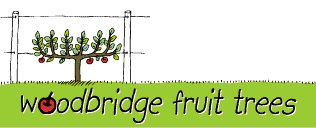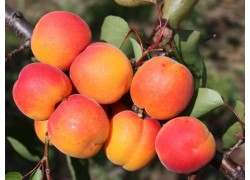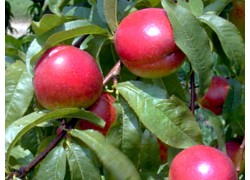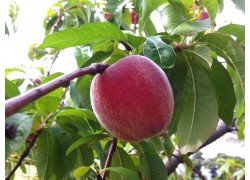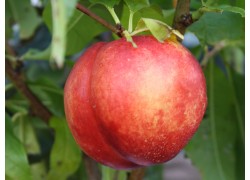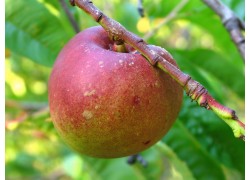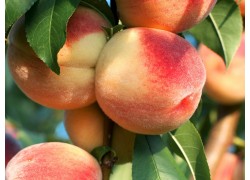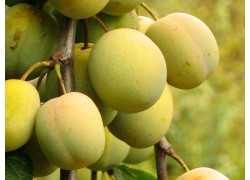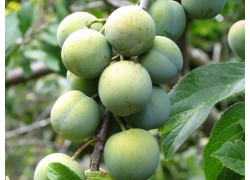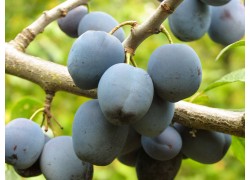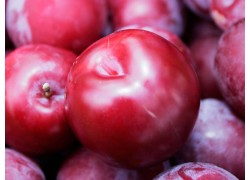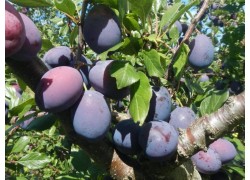No products
Filter
Dwarfing Stone fruit - Peaches, Apricots, Plums, Nectarines. Idea for small espaliers or pots.
Dwarf Stone Fruit There are 11 products.
-
Moorpark Apricot DWARFING Ripens: January - February
DWARFING variety makes this tree more suitable for Espaliering that its non dwarfing counterpart. Our favourite well-know old-style apricot with great flavour. Unlike the more modern varieties, the fruit are a little smaller but the flavour more intense. A classic apricot colour - orange with a red blush on the sunny side. Does well in dry summers. Makes...
$49.00 -
Fantasia Nectarine DWARFING Ripens: February
DWARFING variety makes this tree more suitable for Espaliering that its non dwarfing counterpart. A yellow fleshed nectarine, freestone that ripens in February. Good flavour and a firm flesh. Lovely orange to red skin, if these are looked after and fed and watered during summer, the fruit can grow quite large - bigger than a tennis ball. Self-fertile.
$49.00 -
Anzac Peach DWARFING Ripens: January - February
DWARFING variety makes this tree more suitable for Espaliering that its non dwarfing counterpart. This Australian peach is about 100 years old! White flesh with a ruby red skin. Amazingly sweet, producing abundant fruit in mid January for about a month. Doesnt seem to be to susceptible to curly leaf. Self fertile.
$49.00 -
Flavourtop Nectarine DWARFING Ripens: February
DWARFING variety makes this tree more suitable for Espaliering that its non dwarfing counterpart. A large yellow-fleshed nectarine, freestone that ripens in February. Red skin, with excellent flavour and a firm flesh. Self-fertile.
$49.00 -
Goldmine Nectarine DWARFING Ripens: February - March
DWARFING variety makes this tree more suitable for Espaliering that its non dwarfing counterpart. This is the old white-fleshed Nectarine, ripens late February-March here and has intense rich flavour, but most important of all is fairly resistant to leaf curl. In good conditions it will rewards you with a huge amount of fruit, sweet and plump especially...
$49.00 -
White Gold Peach DWARFING Ripens: January - February
DWARFING variety makes this tree more suitable for Espaliering that its non dwarfing counterpart. This is an early white fleshed cling stone peach with firm but sweet, juicy flesh. Bears well, and self-fertile.
$49.00 -
Coe's Golden Drop Plum DWARFING Ripens: February - March
DWARFING variety makes this tree more suitable for Espaliering that its non dwarfing counterpart. This famous old English plum has a clear yellow skin and gorgeous yellow flesh with a sweet melting flavour. Amazing eaten (juicy!), and good for stewing and jams. Pollinated by Damson, Angelina, Greengage. Ripens late February
$49.00 -
Greengage Plum DWARFING Ripens: February
DWARFING variety makes this tree more suitable for Espaliering that its non dwarfing counterpart. A small round greenish yellow plum with intense flavour (the Cox's Orange of the plums) tends to crop incredibly heavily and then has a year's rest. Great for stewing, eating and bottling. Considered partially self fertile but having another plum (eg Coe's...
$49.00 -
Angelina Plum DWARFING Ripens: February - March
DWARFING variety makes this tree more suitable for Espaliering that its non dwarfing counterpart. This is the classic purple highly flavoured European Plum. Originated in France but has been widely spread around the world. It's purple in colour and has a rich flavour that cooks superbly and is great eaten fresh. Ripens February.
$49.00 -
Santa Rosa Plum DWARFING Ripens: February
DWARFING variety makes this tree more suitable for Espaliering that its non dwarfing counterpart. Santa Rosa is the a red fleshed Japanese plum, with medium sized fruit and a deep red skin. A prolific bearer, self fertile and reliably pollinates other japanese plums. Widespread popular variety grown commercially, Bred by Luther Burbank in around 1906 USA....
$49.00 -
Robe de Sergeant Plum DWARFING Ripens: February - March
A European prune with elongated purple fruit yellow flesh, freestone. Ripens mid season. Prunes are good eaten fresh but come into their own when cooked in pies, stewed or preserved. Pollinated by other European plums.
$49.00
